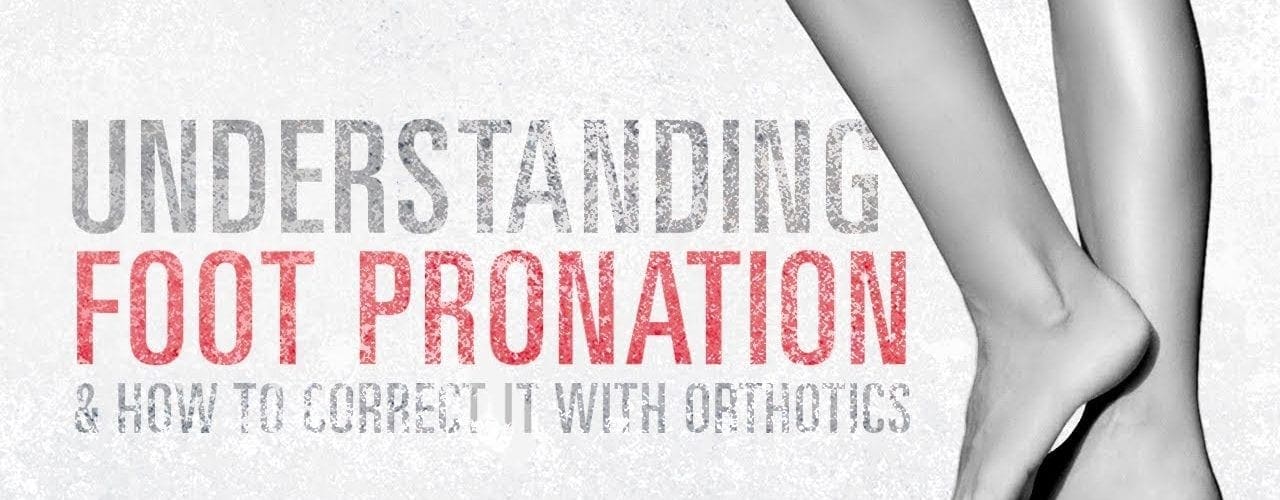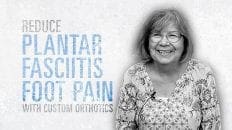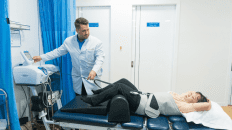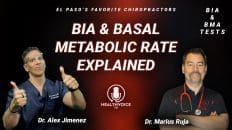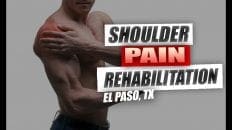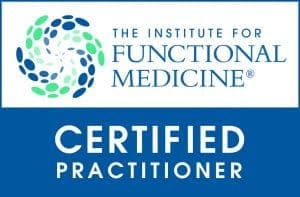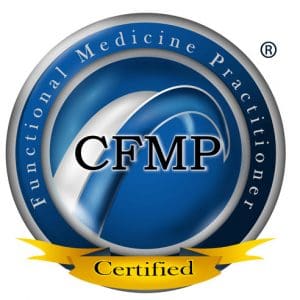When the body has a loss of mobility, it can be due to the joints that are located on the foot. Foot pronation is when the foot is either rolled in or out causing the body to become crooked and that can cause some problems that are affecting the body. When there is foot pronation, the body can suffer from lower back pain, problems with the foot itself and many more complications. So by using custom foot orthotics can actually help correct foot pronation and aligned the body to walk correctly. When people are walking to their destination, they always seem to be walking on the outside of their foot instead of inside. This is due to the individual lifting their heel off the ground and bending at the middle of their arches, causing the toe joint to be immobile. This is known as functional hallux luminous and it can cause problems. By using custom foot orthotics, it can enhance the motion of the first MTP joint in the foot and can give the person proper arch support. These are customed to the individual and can help align the body, so that way when a person is walking, they can walk straighter, taller and not have to worry about their body becoming crooked or misaligned. Using foot orthotics can help a person feel good and be free of pain as well since they can almost retrograde foot pronation that can surely impact the entire posture and not just making the body rely on one side of the foot to make it crooked. Dr. Alex Jimenez explains to patients about the importance of how custom foot orthotics can help them walk a bit better and not having to deal with misalignment of the body and the complications that may come over time.
[00:00:19] The body represents a complex yet elegant system that used for simultaneous support, mobility, postural alignment, and forward advancement.
[00:00:29] Functional loss of mobility, at the toe joints can create havoc with the entire postural support complex.
[00:00:35] Is pronation really the etiology of the things we see when we look at foot and knee and hip them back? Or is it one of several manifestations of stress to the entire musculoskeletal system related to a suddenly different origin that happens to be foot related?
[00:00:53] Take a look at the foot you see in front of you.
[00:00:55] It’s pronated. There’s no doubt about it. But look at their shoe. The foot rolls in, but the shoe rolls out. How possibly can that happen? Here’s another example of the same phenomenon in a different patient. Look at the foot. Look at it from the front and the back. There’s too many toes sign. It’s clear that the foot is totally pronated. But now in the right slide and look at the shoe. The shoe is totally worn to the lateral side. How does someone pronate when they walk on the outside, not the inside? Now, if we look at this slide, this is a dynamic slide. What happens when she’s walking? You can clearly see that her heel is lifted from the ground. But where did she bend? In the middle of her arch. The toe joint doesn’t move. That is functional hallux luminous. And when you think about it, it equates to when pathologic or late midstance phase pronation occurs at the time of heel lift, not heel contact. And here, if you look head-on what you can see is that as the heel begins to lift, there’s a horizontal line right over the medial malleolus of the ankle joint.
[00:02:12] And you could see that as the foot starts to pronate at that time, the medial malleolus, which is the tibia, is not rising up. It’s staying at the same level. But if you look at the side view, which is in a little box on the left-hand side, you could see that the heel is lifted an inch or two off the ground already. Well, if the heel is rising, but the ankle not moving. What’s happening is that the leg is falling at exactly the same speed that the heel is being lifted off the ground. So that’s exactly what this is, is that the leg is falling at the same rate of speed, that the heel is rising. So when a lot of ways pronation, it’s an illusion that it seems to be contact related. But when we realize that the limb is falling at the time the heel is lifting, it gives us a picture that is not quite accurate. Think about looking at that from the back on the left-hand slide, it looks like the calcaneus has rolled out from under the heel. But when we realize that the tibia, which is what’s moving inward, is sitting on top of the subtalar joint and like I said earlier, works like a differential gear or like a screw as it drops, it’s going to internally rotate.
[00:03:31] As it internally rotates, it’s going to make it appear. And so the heel is rotated out from under the foot, even though the heel has not rotated at all.
[00:03:40] So why even bother with prefabricated orthotics? What’s the intent? Well, it’s a lot more than you might think. Now that we realized the effect of functional hallux luminous and how that can cause almost a retrograde pronation that can impact the entire posture and not one foot put the body above it.
[00:03:57] What we want to do with the foot orthotic is not so much control motion as much as we can enhance the motion of the first MTP joint. If we can do that, we get automatic arch support by the windlass. We get the ability to raise body weight and we also get the ability to advance forward all simultaneously. What the orthotic does, is it promotes proper first-rate function, which is playing a flexion, inversion, and we encourage motion to occur when the demand is the greatest.
General Disclaimer
Professional Scope of Practice *
The information herein on "Understanding Foot Pronation & How To Correct It" is not intended to replace a one-on-one relationship with a qualified health care professional or licensed physician and is not medical advice. We encourage you to make healthcare decisions based on your research and partnership with a qualified healthcare professional.
Blog Information & Scope Discussions
Welcome to El Paso's Premier Wellness and Injury Care Clinic & Wellness Blog, where Dr. Alex Jimenez, DC, FNP-C, a Multi-State board-certified Family Practice Nurse Practitioner (FNP-BC) and Chiropractor (DC), presents insights on how our multidisciplinary team is dedicated to holistic healing and personalized care. Our practice aligns with evidence-based treatment protocols inspired by integrative medicine principles, similar to those found on this site and our family practice-based chiromed.com site, focusing on restoring health naturally for patients of all ages.
Our areas of multidisciplinary practice include Wellness & Nutrition, Chronic Pain, Personal Injury, Auto Accident Care, Work Injuries, Back Injury, Low Back Pain, Neck Pain, Migraine Headaches, Sports Injuries, Severe Sciatica, Scoliosis, Complex Herniated Discs, Fibromyalgia, Chronic Pain, Complex Injuries, Stress Management, Functional Medicine Treatments, and in-scope care protocols.
Our information scope is multidisciplinary, focusing on musculoskeletal and physical medicine, wellness, contributing etiological viscerosomatic disturbances within clinical presentations, associated somato-visceral reflex clinical dynamics, subluxation complexes, sensitive health issues, and functional medicine articles, topics, and discussions.
We provide and present clinical collaboration with specialists from various disciplines. Each specialist is governed by their professional scope of practice and their jurisdiction of licensure. We use functional health & wellness protocols to treat and support care for musculoskeletal injuries or disorders.
Our videos, posts, topics, and insights address clinical matters and issues that are directly or indirectly related to our clinical scope of practice.
Our office has made a reasonable effort to provide supportive citations and has identified relevant research studies that support our posts. We provide copies of supporting research studies upon request to regulatory boards and the public.
We understand that we cover matters that require an additional explanation of how they may assist in a particular care plan or treatment protocol; therefore, to discuss the subject matter above further, please feel free to ask Dr. Alex Jimenez, DC, APRN, FNP-BC, or contact us at 915-850-0900.
We are here to help you and your family.
Blessings
Dr. Alex Jimenez DC, MSACP, APRN, FNP-BC*, CCST, IFMCP, CFMP, ATN
email: coach@elpasofunctionalmedicine.com
Multidisciplinary Licensing & Board Certifications:
Licensed as a Doctor of Chiropractic (DC) in Texas & New Mexico*
Texas DC License #: TX5807, Verified: TX5807
New Mexico DC License #: NM-DC2182, Verified: NM-DC2182
Multi-State Advanced Practice Registered Nurse (APRN*) in Texas & Multistate
Multistate Compact RN License by Endorsement (42 States)
Texas APRN License #: 1191402, Verified: 1191402 *
Florida APRN License #: 11043890, Verified: APRN11043890 *
* Prescriptive Authority Authorized
ANCC FNP-BC: Board Certified Nurse Practitioner*
Compact Status: Multi-State License: Authorized to Practice in 40 States*
Graduate with Honors: ICHS: MSN-FNP (Family Nurse Practitioner Program)
Degree Granted. Master's in Family Practice MSN Diploma (Cum Laude)
Dr. Alex Jimenez, DC, APRN, FNP-BC*, CFMP, IFMCP, ATN, CCST
My Digital Business Card
RN: Registered Nurse
APRNP: Advanced Practice Registered Nurse
FNP: Family Practice Specialization
DC: Doctor of Chiropractic
CFMP: Certified Functional Medicine Provider
MSN-FNP: Master of Science in Family Practice Medicine
MSACP: Master of Science in Advanced Clinical Practice
IFMCP: Institute of Functional Medicine
CCST: Certified Chiropractic Spinal Trauma
ATN: Advanced Translational Neutrogenomics






